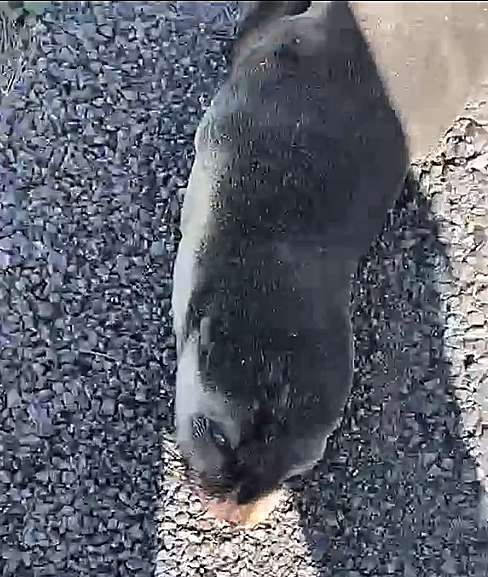Seal v streets : Mission to map marine mammals on the move

AT RISK: A young fur seal was killed on Wainui Road recently. Photo supplied
.
With fur seal and sea lion populations bouncing back, the Department of Conservation and Waka Kotahi NZ Transport Agency have launched a nationwide project to track where marine mammals are appearing near roads – and why.
The work builds on the success of recent guardrail installations in Kaikōura, which have already made a difference by delivering conservation gains, helping keep curious young fur seals safely off the tarmac, and reducing the risk of seal-related accidents on the road
The public is being asked to report sightings to help protect both people and wildlife as Aotearoa adapts to the return of these ocean wanderers and navigates the challenges of “Seal Silly Season”.
The goal is to model road-related risks for marine mammals like seals across the country.
“We’re asking people to report sightings of seals, fur seals or sea lions on or near roads,” said Jody Weir, senior technical adviser – marine.
“Your sightings – date, location, even a photo if it’s safe – will help us map hotspots and understand the risks. It’s a great example of how citizen science could make a real difference.”
This national study uses existing DoC and Waka Kotahi road data and will be strengthened by public reports. The results will help inform future road planning, identify high-risk zones, and guide where further road improvements might be needed.
Whakatāne Senior Community Ranger Jesse Burt said fur seals were making a comeback on predator-free islands in the Eastern Bay, and between May and September it was not uncommon to come across newly weaned pups exploring the coastline.
“Although it’s wonderful to see them, seals can be vulnerable to dogs, people, and traffic.
“In the last fortnight, we’ve had an unfortunate incident where a young fur seal was killed on Wainui Road, likely due to a collision with a vehicle. This is the kind of incident the marine mammal mapping project can help us understand, and hopefully reduce, in the future.”
Mr Burt said seals had previously turned up in some unexpected places.
“In 2019, an elephant seal made its way up the Whakatāne River and tried to cross the road – not easy to miss a more than 2500kg animal lounging on the footpath or beside the rowing club.”
The marine mammal mapping project is useful for long-term planning, but if you come across a seal that is badly injured, being harassed, or in danger, please call 0800 DOC HOT (0800 362 468).
Seal tips
■ Never touch, handle, or feed a seal, because they can be aggressive if they feel threatened. It’s also a breach of the Marine Mammals Protection Act.
■ Maintain a distance of at least 20 metres from the seal if possible and avoid getting between the seal and the sea.
■ Give seals space if encountered on or near a beach.
■ Always keep dogs on a leash and away from seals.
■ Ensure small children are at a safe distance and under control when watching seals.
■ If you see a seal that’s badly injured, being harassed or in danger, call 0800 DOC HOT (0800 362 468)
Report a sighting
If you see a seal or sea lion on or near a road, let DoC know by emailing [email protected].
Include the date of the sighting, a description of the location and animal(s), specific GPS co-ordinates if possible (or drop a pin), and a photo (if safe).
Also report the same information for any dead marine mammals on or near roads.
Reports submitted by June 22 will help shape the initial national road risk model – but DoC welcomes ongoing sightings.
If you come across a seal that is badly injured, being harassed, or in danger, please call 0800 DOC HOT (0800 362 468).